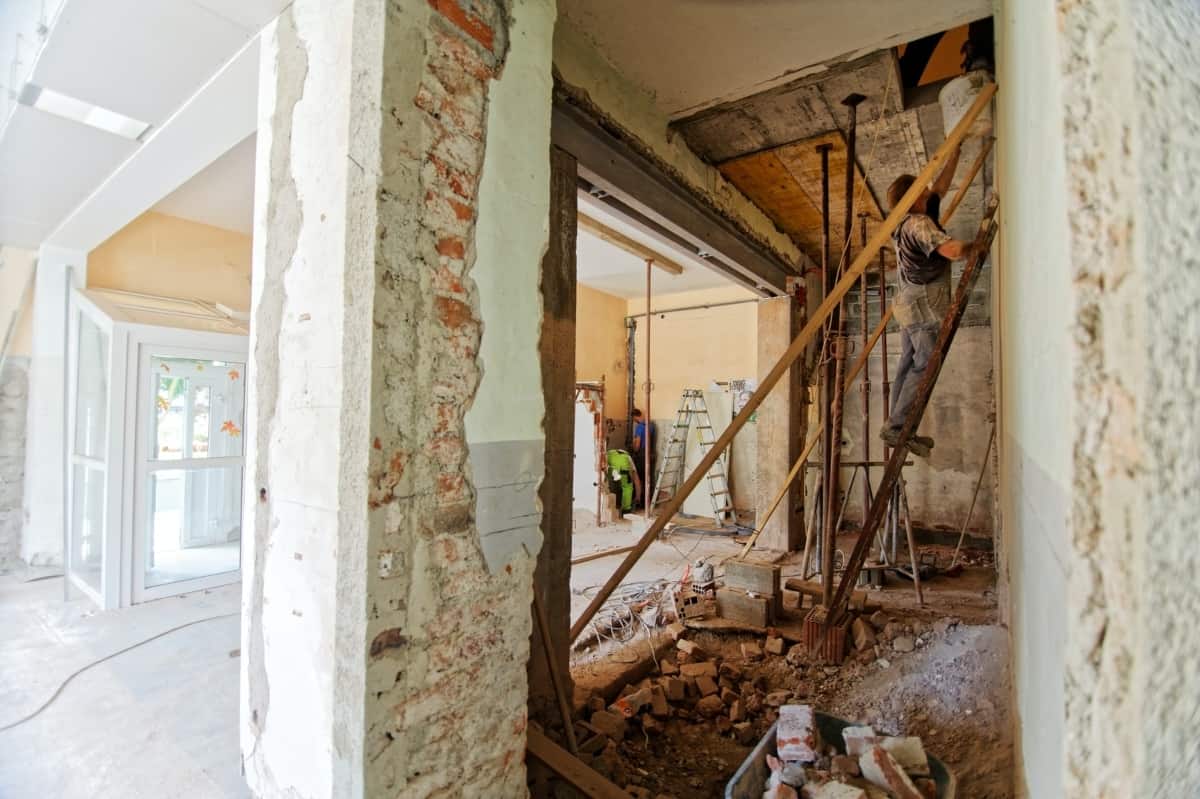Your home is probably your biggest investment and the place where you spend significant amounts of time. When something goes wrong there, it becomes a sudden nuisance you want to care for right away to maintain the property’s value. One problem that is particularly bothersome for homeowners is mold.
Mold is a fungus, and its microscopic spores are all around us floating around. However, they don’t cause any problems until there is too much dampness or humidity in the atmosphere. Once that happens, mold only needs a few things to survive and thrive. It doesn’t take much for mold to begin to grow in a home. If the spores have a warm, humid, moist surface to grow on, then the mold will populate.
If you’ve had an invasion of mold spores in your home, you may be wondering — does home insurance cover mold? That’s an important question to answer because sometimes mold does do damage to your home. It can cause deterioration to occur quite quickly. Also, mold is harmful to some people who have allergies or asthma. Whatever the case may be, if you have mold in your home, it’s best to get rid of it right away.
You may even wonder if home insurance covers mold if you’re getting ready to purchase an older home because you anticipate mold might develop later on. Either way, it’s essential to know what is covered through your standard homeowner’s insurance.
Does Home Insurance Cover Mold?
The answer to this question — does home insurance cover mold — is not a simple yes or no answer. Insurance does cover mold in some instances, and in some instances, it doesn’t.
Homeowner’s insurance is designed to cover damage caused by accidents, acts of nature, burglary, and so on. Homeowners insurance covers what is called “covered perils.” These perils are a list of incidents the insurance company will cover if they occur. When it comes to mold, you need to determine if the cause of your damage falls under the covered peril listing.
Most mold damage results from water coming into the home or water leaking somewhere in the home. As stated, for the insurance company to pay for the damages, it must have occurred because of one of the covered situations.

Instances of Mold Covered Under Insurance
In some cases, your insurance company will cover mold that results from water damage due to any of the following:
- Leaks due to a dishwasher malfunction.
- Water damage due to a hot water tank pipe bursting.
- Mold from water due to pipes freezing and leaking.
- Leaks due to a washing machine issue.
The common theme between these is they all have to do with a piece of equipment malfunctioning or breaking. This is something that is not your fault.
If you have water and subsequently mold damage due to water coming into the home from a storm or some other type of flooding, it won’t be covered under your typical homeowners’ insurance. However, if you have flood insurance and your standard insurance, you should be in good shape.
Other acts of nature could result in water and mold issues. For example, if you experience a tornado or strong storm that blows off roof shingles, which, in turn, allows water to creep in, then you might be able to get that covered. The initial incident that caused the water and mold was an act outside your control or doing.
Instances of Mold Not Covered By Insurance
There are other reasons you might be dealing with a mold problem in your home.
If you are negligent in caring for your home and taking care of regular maintenance issues, then mold can grow and spread. For example, let’s say you know that you have a small leak under the bathroom sink. However, you fail to fix it, and over time, mold appears.
These types of issues are considered the homeowner’s fault and won’t be covered by your insurance policy.
How to Go About Filing an Insurance Claim
Once you’ve answered the question — does home insurance cover mold and you know you’re on the right track, you can start moving forward with your claim.
You want to get the mold damage fixed right away to prevent further problems in your home. Filing a claim with your insurance company is pretty straightforward. You can begin by taking some photos of the damage and documenting when, how, why the problem started. That way if your memory fails, you’ll have your notes for preciseness. Be sure to contact the insurance provider right away to get the ball rolling. Let them know you need to file a claim for damages. Provide them with as much information as possible. The insurance company may give you further instructions or tell you to fill out paperwork. Whatever steps they give you to follow, do so promptly.
Denied Claims for Mold Damage
If your claim comes back denied, you still may have recourse. If you’re sure the mold issue is not your fault, you could secure a professional to come in and assess the root cause of the mold. Once they’ve completed their inspection, have them put in writing the cause.
Next, write a letter explaining the documents you are attaching and how you would like another review of your claim. Explain how you think it is a valid cause for coverage. Be sure to word the letter cordially.
Once your claim is accepted, you will prepare to meet the insurance adjuster. Your insurance company will send out an adjuster to look over the situation to assess the cost to repair. The adjuster will provide an estimate of costs to repair the damage. The amount they provide is usually binding. Now it’s time to select a place to complete the work.

Mold Prevention
If you can prevent mold from happening in the first place, you’ll be a lot better off. These tips can reduce the likelihood of mold creeping into your home:
- Install dehumidifiers in spaces that are quick to become damp.
- Regularly check your plumbing pipes for leaks.
- Make sure you provide plenty of ventilation in your bathrooms, laundry rooms, kitchens, and other areas where mold may begin to grow.
- Clean gutters regularly so ice dams don’t form in the winter, which can lead to leaks.
- Inspect the roof regularly for loose shingles or areas where water could leak in.
- Inspect around the windows and doors and caulk cracks.
- Ensure the interior and exterior pipes are properly insulated in the winter, so you won’t have any breakages or leaks.
- Maintain and check your appliances and hot water heaters for signs of damage or leaks.
- Strive for a 50% humidity level in your home year-round. An air conditioner or dehumidifier will aid you in this goal. You can purchase a humidity checker. Monitor the checker throughout the day to see your current levels.
- Allow the air to flow freely in your home by using exhaust fans as needed. These will assist with venting areas such as the kitchen and bathroom. Vent your clothes dryer to an exterior wall and let it blow outside.
- If you have any type of flooding in the home, be sure to clean it out promptly, drying it fully.
- Purchasing mold inhibitors is important if you decide to paint your home. You can find this at a home improvement store.
- Clean bathrooms with mold-killing products.
- Remove or replace carpet and upholstery if you experience a situation that has resulted in them getting soaked and you can’t dry them right away.
- Don’t use carpets in places like bathrooms or basements because of the high probability of moisture content.
Next Steps
Owning a home offers lots of joy…and its share of responsibilities. Having the right type of insurance is critical in times of need. You can ensure you have the best coverage whenever a problem arises by investing in a solid home insurance plan from ONIT Home. Our team of licensed brokers offers home insurance plans to fit every budget and situation. Call us today at 1-833-433-0331 to get started.
We’ll provide you with the best coverage that fits your needs and your home’s needs. Our plans are customized because we understand the uniqueness of every person. Bundle your home insurance with auto coverage for convenience and savings. Get in touch with one of our licensed brokers to find out how you can get excellent coverage, personal customer service, and a great price. Fill out our online form and we can give you your free quote today!



